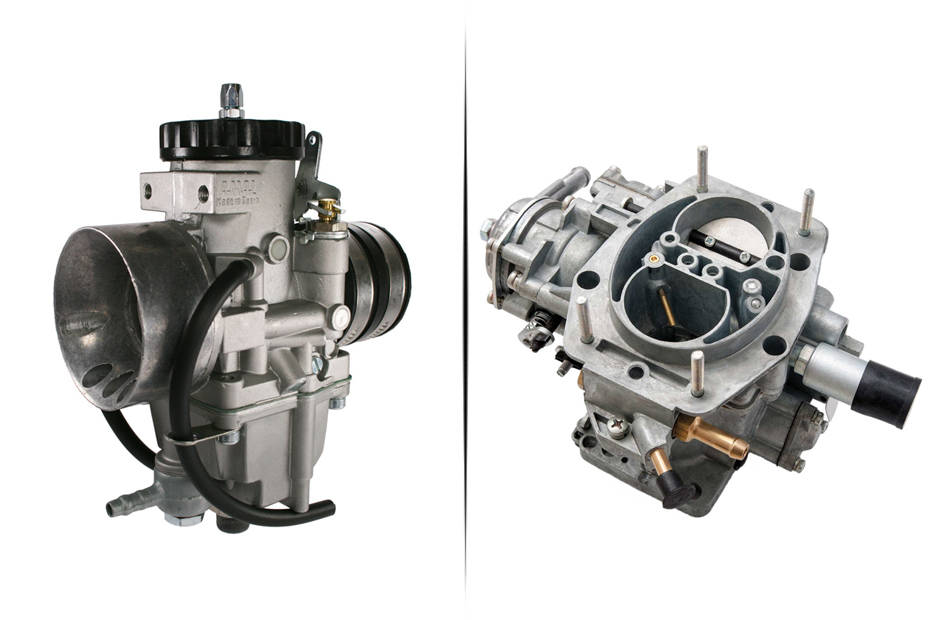Carburettor Vs Fuel Injection: Difference Explained
Modified On Apr 5, 2019 By Abhijeet Singh Rathore for TVS Apache RTR 160 4V
- 16113 Views
We take a closer looks at how the two fuel delivery systems function, their positives and negative aspects.

Carburettor equipped vehicles have been around for ages. Its simple framework means a carb is easier and more cost effective to manufacture and maintain. Hence, it has been the ideal fuel delivery system for engines since the late 1800s. Around the 1980s though, newly developed fuel-injection systems which claimed to provide better performance with higher fuel efficiency started replacing carburettors. Quite a few of us of us still rack our brains trying to understand the actual difference between the two. And so, the age-old confusion between carburettors and fuel-injection systems continues even today.

Not everyone considers the differences between the two while buying commuter motorcycles or entry-level performance bikes. Does it actually have an impact on the way the bike runs and performs? Well, turns out, it does! Take the TVS Apache RTR 160 4V for example. It’s offered with both Carb and EFi which put out slightly different power figures. The Fi, for instance, dishes out 16.8PS at 8,000rpm while the carb version generates 16.5PS at the same rev range. Its torque output remains unchanged though. Essentially, the former would post a higher top speed compared to the latter which will be quicker off the line. To better understand these systems, let’s take a closer looks at how the two fuel delivery systems function, their positives and negative aspects.
How do Carburettors work?

The primary job of a carburettor is to mix air and fuel in a certain ratio and deliver it to the combustion chamber (or cylinder). A carburettor works by intercepting the flow of air to your motorcycle’s cylinder. Basically, after the piston compresses it creates a low-pressure vacuum which pulls in the air-fuel mixture through a tube in the carburettor. This “tube” is designed to become narrower towards the end which in turn increases the pressure of the air flowing through it. The low pressure also forces fuel to be pulled in from a tiny reservoir in the carburettor which then mixes with the air flow, thus creating an air-fuel concoction that burns in the cylinder. This phenomenon is called the Vacuum Venturi Effect.

That said, there are a couple of more components that compliment the working of a carb. For instance, the throttle valve which controls the amount of air sucked into the Carb and the fuel jet, which draws fuel directly from the fuel tank to be stored in the carb reservoir.
On the downside, a carburettor is purely mechanical and doesn't rely on an Electronic Control Unit (ECU) to monitor and tweak the system. In fact, the air-fuel mixture in a carburettor is constant and can only be tweaked or altered by physical adjustments to the carburettor jets. Moreover, a carburettor cannot understand and change the air-fuel mixture according to a particular situation. For example, you would notice a drastic drop in power if you were to climb high altitudes with the bike where the air is thin. At those heights, the engine requires more oxygen for combustion which isn’t supplied by the carb, resulting in a drop in power. But as you head back to sea level, the system starts functioning normally again.
Carburettors are long-lasting and are made of lighter materials. Also, they do not require any electrical components for installation and are thus easier to install and maintain.
Are fuel injection systems any better?

Since the 1980s developments in the world of engines has yielded fuel injection systems that are more efficient in burning fuel in the cylinder than good old carburettors. A fuel injection sprays calculated spurts of fuel directly into the combustion chamber. The fuel is forced through a small nozzle under pressure in the combustion chamber where it ignites and produces the power stroke. Basically, during combustion the piston compresses the air-fuel mixture in preparation for ignition which is know as a power stroke.

Fuel injection systems are inherently more precise, as they mix air and fuel better and deliver them in finely atomised particles. The ECU along with multiple sensors calculate variables to constantly adjust the exact amount of air and fuel mixture required to be burned in the cylinder. This results in better fuel efficiency and swifter response from the engine. The Suzuki Gixxer SF Fi in our tests returned a much higher fuel efficiency of 51kmpl in the city and 62.47kmpl out on the highway. It was also quicker off the line and clocked a 0-60kmph time of 5.21 seconds and a 0-100 time of 17.56 seconds. On the contrary, the carb variant was slower off the line with 5.60 seconds for the 0-60kmph run and touched 100kmph in 19.71 seconds. The carb variant returned 48.54kmpl and 55.02kmpl in the city and highway respectively. Aside from this, fuel injection vehicles produce far fewer carbon-based emissions compared to vehicles with carburettors.

But, technology comes at a price. There is a substantial price difference between a fuel-injected and a carb bike. For instance, the Suzuki Gixxer SF carb retails at Rs 86,145 while the Gixxer SFFI is priced at Rs 92,145 - a premium of Rs 6,000.

Both these systems have their pros and cons, however, given its benefits in performance and fuel efficiency, a fuel-injected vehicle would prove to be a better value for money offering over a carbureted one in the long run. That said, if you’re the old school types who like fiddling and working on their own bikes, there’s nothing better than a simple carburettor.
